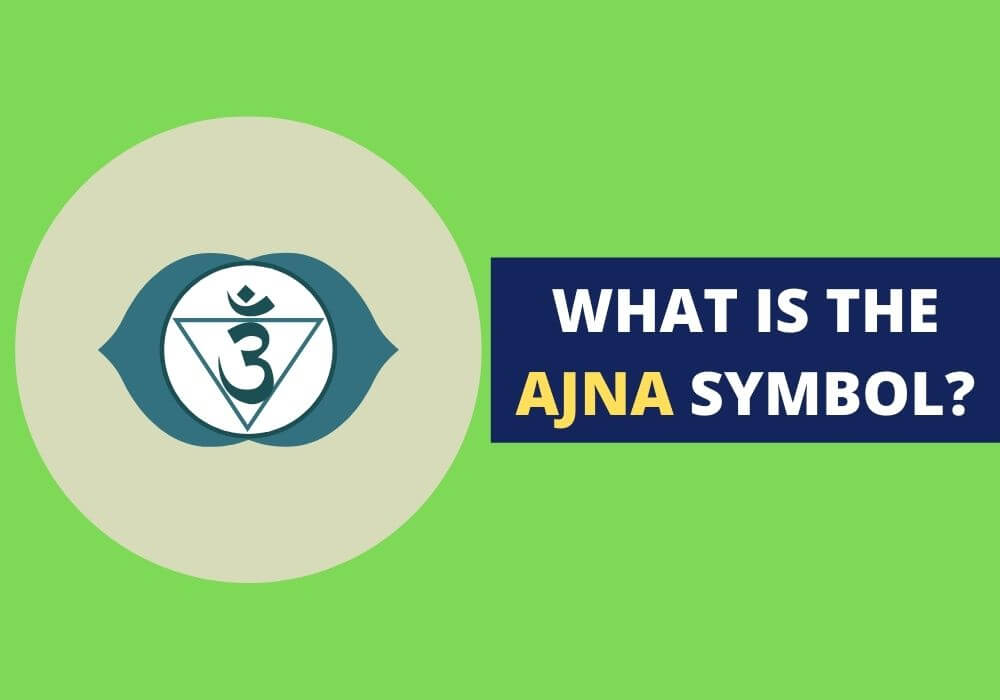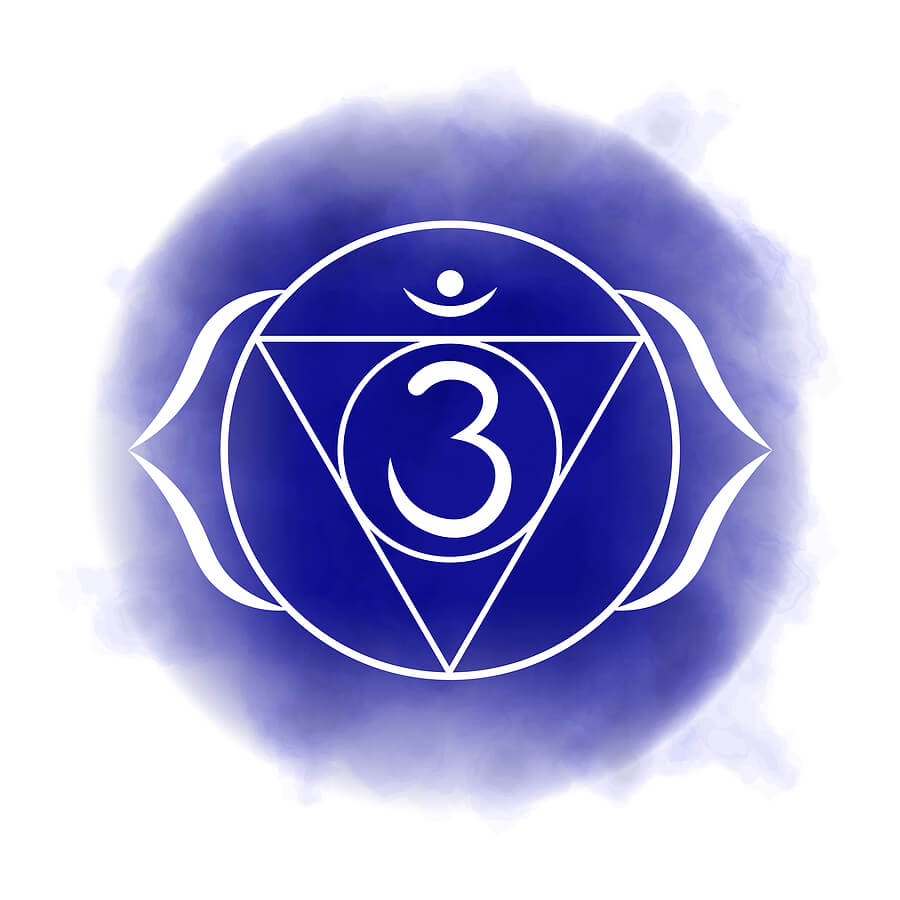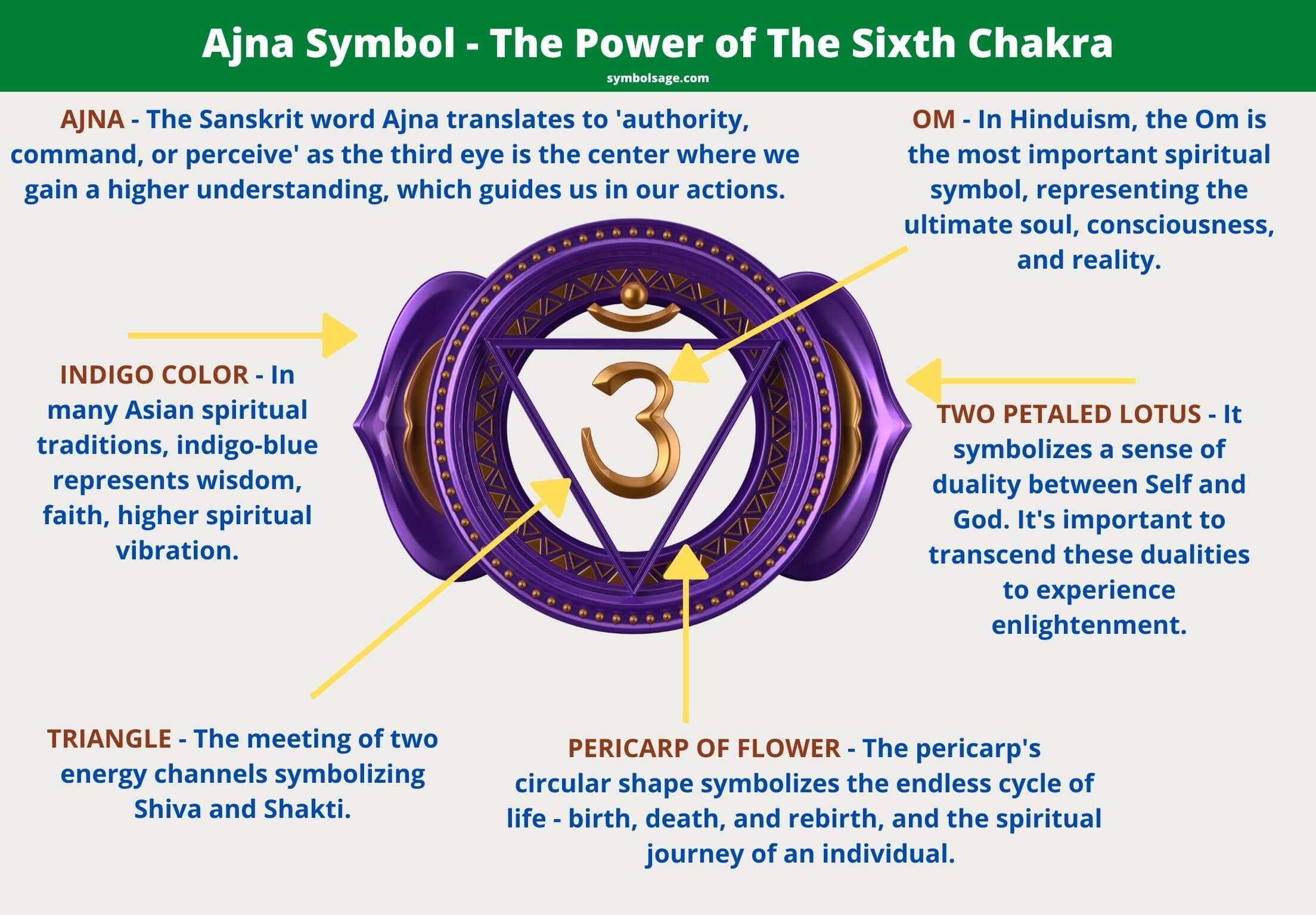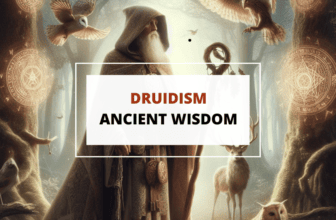
Table of Contents
The Ajna chakra, or Third Eye, sits where our consciousness and the physical world cross paths, right between the eyebrows. It’s the sixth chakra in the Hindu tradition, acting as a door to intuition, insight, and spiritual clarity. This is the spot where the physical and spiritual connect, letting intuition grow and unlocking the soul’s wisdom. When we tap into the Ajna chakra, we open up to deep understanding and the ability to see beyond what’s in front of us.
Let’s dive into how the Ajna chakra can transform us and guide our path to enlightenment.
The Third Eye Symbol Design

In Hindu tradition, each of the seven main chakras features a unique mandala design, which means ‘circle’ in Sanskrit and symbolizes the universe. This circular form reflects eternal life and the unity of all life forces.
The Ajna chakra’s symbol, often depicted in indigo or bluish-purple, sometimes transparent, takes the shape of a two-petal lotus flower. These petals symbolize the Ida and Pingala nadis, or energy channels, that converge at this brow chakra and ascend towards the crown chakra, Sahasrara.
Named ‘ham’ and ‘ksham,’ the petals stand for Shiva and Shakti, whose energies merge in the triangle located within the lotus’s center, emitting the cosmic sound Om.
At the heart of the mandala, inside the lotus’s circle, sits Hakini Shakti, depicted with six faces and four arms. She holds a skull, Shiva’s drum, and prayer beads in three hands, while her fourth hand gestures blessings and protection.
Above Hakini Shakti, a downward-pointing triangle encases a white lingam, signifying wisdom. Each element within the Ajna chakra’s design carries distinct meanings, together illustrating the chakra’s profound symbolism.
The Meaning of the Ajna Symbol

Ancient Yogi texts reveal that the third eye chakra, or Ajna, is the hub of clarity and wisdom, tied closely to the realm of light. It stands as one of the seven primary energy centers, showcasing the power to control creation, maintenance, and the end of the world. This chakra is also considered the home of Brahman, the ultimate cosmic spirit.
The Ajna symbol isn’t just visually appealing; it packs a deep meaning, from its name and color to every intricate detail of its design.
- The Name ‘Ajna’
The Sanskrit word “Ajna,” translating to ‘authority, command, or perceive,’ underlines the third eye chakra’s critical role in guiding our decisions with a higher understanding. By activating this chakra, we unlock not only intellectual but also conceptual understanding, allowing us to tap into deeper truths and look beyond basic words and thoughts.
Serving as our spiritual and intuitive eye, the Ajna chakra clears the path for thoughtful reflection and spiritual insight. It’s the sweet spot where intuition pairs with logic, helping us make choices that truly reflect who we are and what we aim for. More than just perception, the Ajna chakra builds a connection between our inner experiences and the external world, boosting our recognition of how everything is linked.
A balanced Ajna chakra brings inner and universal harmony, fostering wisdom and a profound awareness that goes well beyond the everyday. Through this chakra, we see the world wholly, drawing on universal wisdom that moves us towards enlightenment and a fuller understanding of ourselves.
- The Indigo Color

Indigo-blue light carries deep symbolic significance across many Asian spiritual traditions, often linked to divine beauty and depth. Seen alongside purple, indigo represents royalty, wisdom, mystery, and faith, blending noble and enigmatic qualities.
This color marks a key energy shift, helping transform lower physical energies into higher spiritual vibrations. Linked closely with the Ajna chakra or the third eye, indigo boosts intuition, deepens inner understanding, and connects us to the spiritual realm.
Its unique qualities make indigo a color for meditation, introspection, and transformation, steering us toward enlightenment and a deeper grasp of the universe and our role in it.
- The Two Petaled Lotus
The two petals symbolize the sense of duality – between the Self and God. In yogic texts, they represent Shiva and Shakti – the primordial male and female cosmic energies representing the dynamic forces of the universe.
When the Ida and Pindala nadis, represented by the two petals, merge in the Crown chakra, we start to ascend the stairway of enlightenment and experience bliss. The third eye chakra represents many dual principles, as well as the necessity of transcending them.
- The Pericarp of the Flower
The pericarp’s circular shape is a symbol of the endless cycle of life – birth, death, and rebirth. In this case, it represents the spiritual journey of an individual and the unity between all entities in cosmos.
The inverted triangle inside the pericarp portrays our connection to the divine and true enlightenment. It’s the point where the lessons and the knowledge of the lower chakras are gathered and expanded into the spiritual consciousness.
- Hakini Shakti
Hakini Shakti represents the third eye’s energy as a powerful female deity, capturing a part of Shakti, Shiva’s divine feminine partner, and the creative power of the universe. Her role in the Ajna chakra is crucial for unlocking intuition, clairvoyance, imagination, and deep inner knowledge.
When you balance Hakini Shakti’s energy in this chakra, it can boost mental clarity, psychic abilities, and connect you deeply with your inner wisdom. Working on this balance helps the divine energy flow smoothly, connecting the physical world with higher consciousness levels. This process empowers you to tap into the full range of your spiritual and intuitive skills.
- The Sound of Om
When the two energy channels meet in the triangle, they create the sound of Om or Aum. In Hinduism, the Om is the most important spiritual symbol, representing the ultimate soul, consciousness, and reality. It’s the sound of all sounds that carries beyond time, knowledge, and the ordinary conscious state. It raises us above the duality of God and the soul.
As it’s associated with the element of ether, Om is frequently included in prayers, meditation, and yoga practice to balance the mind and connect to the divine.
The Ajna Symbol in Jewelry and Fashion
The Ajna symbol, known for its link to the third eye chakra, has made a leap from its spiritual roots to become a standout feature in jewelry and fashion. Often shown as a two-petaled lotus or an eye inside a triangle, it embodies intuition, wisdom, and a deep connection to the self.
Jewelry designers craft this symbol into eye-catching pieces like necklaces, earrings, bracelets, and rings, turning them into more than just accessories. These items double as personal emblems, thought to boost psychic skills, clear the mind, and stabilize emotions.
The symbol’s indigo hue, tied to the Ajna chakra, brings an element of mystery and style, making such jewelry a hit for both its looks and its meaning.
In fashion, the Ajna symbol decorates clothing, embroidery, and accessories, catching the eye of those keen to show off their spiritual side or just wear something rich in meaning and beauty. Fashion designers weave this symbol into their work to stir feelings of calm and awareness, seamlessly blending the physical with the spiritual.
Wearing the Ajna symbol, whether for its beauty or its deep significance, provides a special way to embrace ancient wisdom and spiritual ties in daily life.
Wrapping Up
The Ajna chakra is not only the symbol of wisdom but of our conscience, where the sense for justice and ethics originate. Its meaning is profound in its simplicity. In essence, it represents the eye of the soul, and the center of presence and perception. A person whose third eye is open has a natural capacity to look at inner-self and see beyond the limits of one’s mind.








